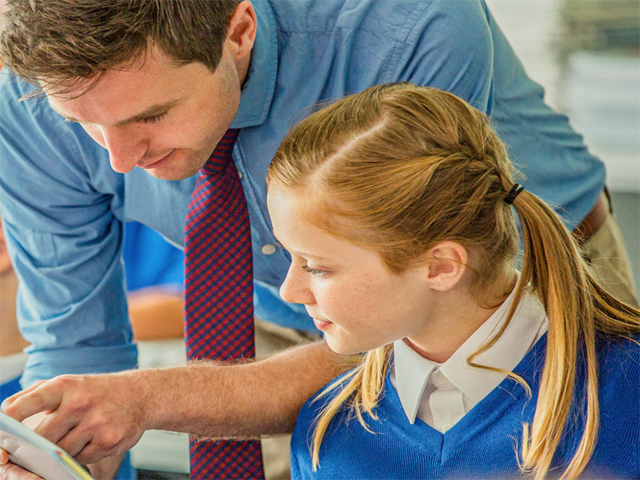Why Are Australian Teachers Under So Much Strain?

Teachers in 2019: Changing expectations for an unchanging role
A groundbreaking Aussie study has found that teachers are living with unprecedented levels of stress and anxiety. Is there a conflict between our changing expectations of education and the current classroom format?
In June, The Conversation published an article on the health and wellbeing of educators. The piece cites a study of 166 Australian school teachers in which more than half admitted to suffering from anxiety and 18% met the criteria for moderate to severe depression. While this may be the most comprehensive study yet conducted in Australia, researchers have been telling us for some time about the toll that the job is taking on a generation of teachers throughout the developed world.
Why is this? Are children just inherently difficult? Is putting thirty of them in one room enough to drive anyone mad? Or is it that the role of our teachers hasn't evolved, despite a shift in our expectations of what students need to learn and how they need to learn it?
The problem isn't just in Aussie schools
Although the actual rate of Australian teacher attrition is hard to define, international studies seem to agree that early-career teacher burnout is a common problem – even in Finland, which is frequently characterised as an educational nirvana.
These figures paint a frightening picture, not just for teachers but for students and for society in general. If education is a key driver in societal wellbeing, we should be more than a bit worried.
Why are teachers under so much strain?
One of the main reasons for teacher stress is the tension between the changes that the profession has had to accommodate and the lack of change in school structures.
Teachers have always had very high levels of responsibility. Contemporary accreditation and regulatory environments, as well as a modern culture of accountability (i.e. parents going in to bat for their kids on a regular basis), mean that teachers have lost a lot of the autonomy that they once enjoyed. This paradoxical combination of personal responsibility and extreme job restrictions means that teachers often feel powerless.
Evidence-based research into the efficacy of teaching strategies has enriched learning. However, it has also raised expectations that teachers will be able to be more innovative in the classroom " something which the education system's strict regulatory framework doesn't always allow. Hence, teachers can feel a tension between serving the needs of their students and complying with formal requirements.
New world teaching clashes with the old-world industrial model
On one hand, teachers are drowning under the number of changes that they must cope with. On the other, their role stays, in many fundamental ways, much the same as it has always been. Teachers have to negotiate the modern expectations of work (fundamentally prepare their students for a new world) while actually continuing to work in an industrial model.
We need to recognise the changing needs of learners
Most people have the same perception of teachers; one that mirrors the model they saw when they were at school. Teachers are teachers are teachers. But the reality is that what we expect children to learn has drastically changed. Contemporary teachers are tasked with preparing their students for a world that's going to look very different by the time the current generation of children are at their professional peak.
If the role of the teacher is to reflect and create the working world of the future, we need to rethink our expectations. We need to rethink what education – and learning – can and should look like. It's high time we recognise that learning doesn't just happen when students are sitting in the classroom and that it's not confined to homework.
We know that just-in-time learning, flexibility, and 1-to-1 support and guidance are highly effective for all learners, but we're only just accepting that conventional models of schooling need to incorporate these strategies. Despite the promises of technology to enrich education and remove some of the pressure from teachers, schools have had a hard time integrating it in a meaningful way (rather than bolting it on as a novelty). This means using tech to help manage the different abilities within any class, and to prepare students for a technology-driven adulthood.
How we can evolve the role of teachers
For teaching to change in line with the rest of the professional world, more attention needs to be paid to the realities of life as a teacher. There should be broader recognition of the complexity of the role – the need to juggle multiple key stakeholders (students, their parents, school administrators, regulators) from a position that doesn't always attract the respect (and salary) that it should.
Only when we address this question of recognition will teaching as a profession finally be able to modernise. Only then will teachers feel sufficiently empowered to make the changes they need to for long and fulfilling professional lives, rather than let anxiety and burnout force them out of the profession.
Dr. Selina Samuels has been a teacher, Head of English and senior school administrator, and an academic in Australia and the UK. She developed an innovative teaching and learning system for an international network of schools and a new school in Hong Kong. Her experience has given her rare insight into what really works for learners of all ages. At Cluey, Selina is responsible for overall educational leadership and ensuring the quality of every student's learning experience. Dr. Selina Samuels, Chief Learning Officer, Cluey Learning
MORE



